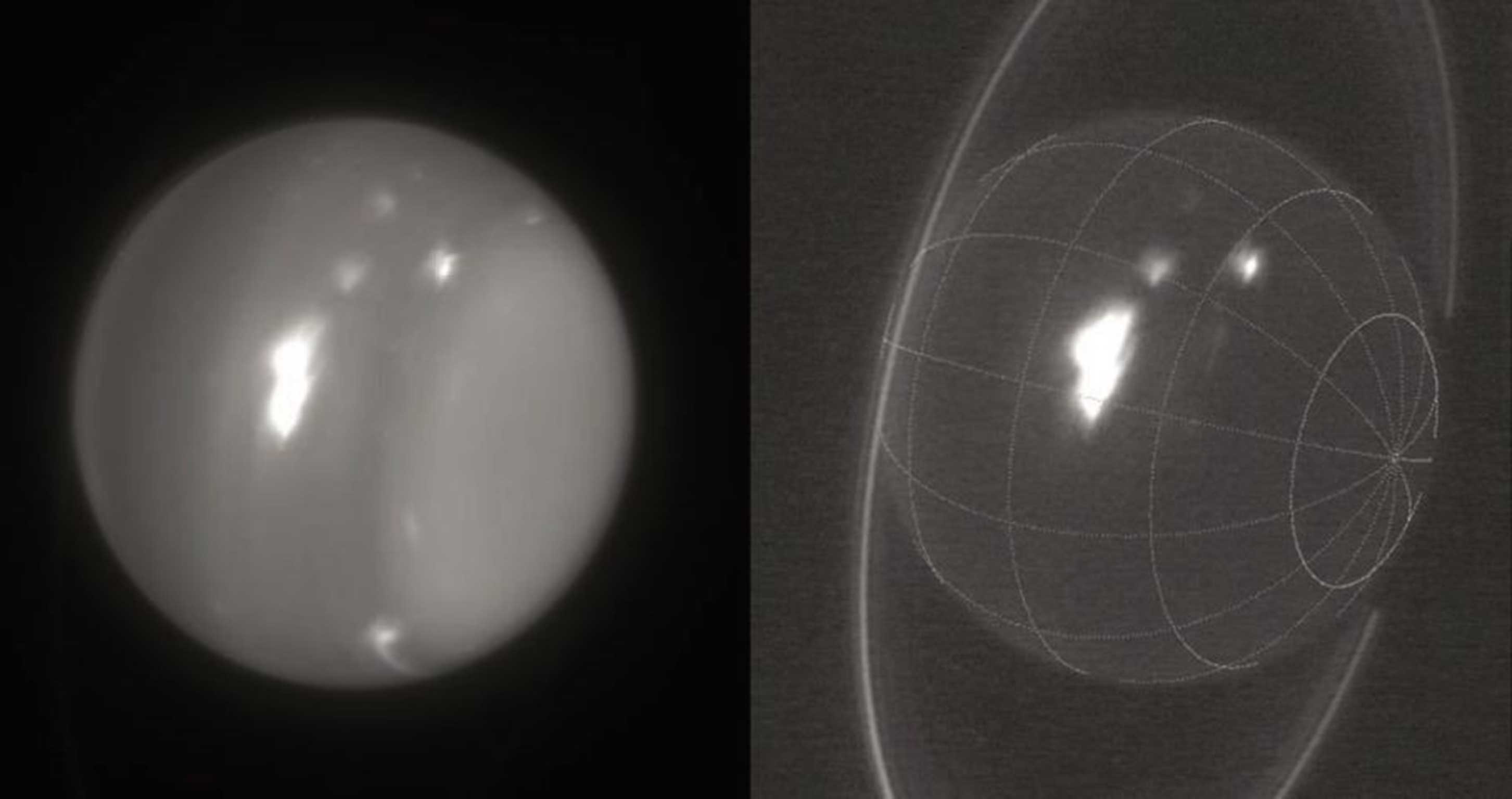Amateur and professional astronomers alike captivated by 'incredible' storms across Uranus
Scientists are baffled by the ferocious atmospheric activity which was expected during the planet's equinox - in 2007

Your support helps us to tell the story
From reproductive rights to climate change to Big Tech, The Independent is on the ground when the story is developing. Whether it's investigating the financials of Elon Musk's pro-Trump PAC or producing our latest documentary, 'The A Word', which shines a light on the American women fighting for reproductive rights, we know how important it is to parse out the facts from the messaging.
At such a critical moment in US history, we need reporters on the ground. Your donation allows us to keep sending journalists to speak to both sides of the story.
The Independent is trusted by Americans across the entire political spectrum. And unlike many other quality news outlets, we choose not to lock Americans out of our reporting and analysis with paywalls. We believe quality journalism should be available to everyone, paid for by those who can afford it.
Your support makes all the difference.Astronomers have been captivated by incredibly bright storms on Uranus that have allowed them to view details in the planet’s hazy blue-green atmosphere for the first time.
Scientists, who first saw the eight large storms building on 5 August from the Keck Observatory in Hawaii, remain confused as to why this incredible storm activity is happening now.
The ferocity of the storm is such that even amateur astronomers – having heard about the activity – were able to see a bright spot once their telescopes were trained on the planet.
Uranus, located about 1.86 billion miles away from Earth, usually presents a bland and featureless surface to astronomers, however, one of the storms seen at 2.2 microns, a wavelength that senses clouds just below the tropopause (the lower boundary of the stratosphere) accounted for nearly 30 per cent of all light reflected by the rest of the planet.
The Hubble telescope examined the storms on 24 October and observed a number of giant storms that extended across around 5500 miles, more than three-quarters the diameter of Earth, at various altitudes.
Imke de Pater, professor and chair of astronomy at the University of California, Berkeley, who has been leading observations on the planet, said: “The weather on Uranus is incredibly active”.
Storms on the planet now are unexpected because forecasters had predicted a peak in the planet’s atmospheric activity during the 2007 Uranian equinox – when the sun shone straight down at its equator.
The equinox is an event that happens only once every 42 years, twice in the course of the planet’s 84-year orbit around the sun.
Scientists thought that these cloud activities, appearing on the planet’s north pole, were driven solely by sunlight as there is no internal heat source for the storms on Uranus. But the latest storms appear to contradict this theory.
Heidi Hammel of the Association of Universities for Research in Astronomy, expressed surprise over the visibility of the storms and added: “But we predicted that such activity would have died down by now. Why we see these incredible storms now is beyond anybody’s guess.”
Uranus, which is the third-largest planet in our solar system and is four times as wide as Earth, is wrapped in an atmosphere rich in hydrogen and helium. It is also rich in methane gases – which account for its blue appearance.
Scientists have previously been unable to view details on its surface, with the planet usually barely visible to the naked eye at magnitude 5.7 and only in very dark, pristine skies, but these storms present an opportunity for them to examine new details of the planet.
Join our commenting forum
Join thought-provoking conversations, follow other Independent readers and see their replies
Comments